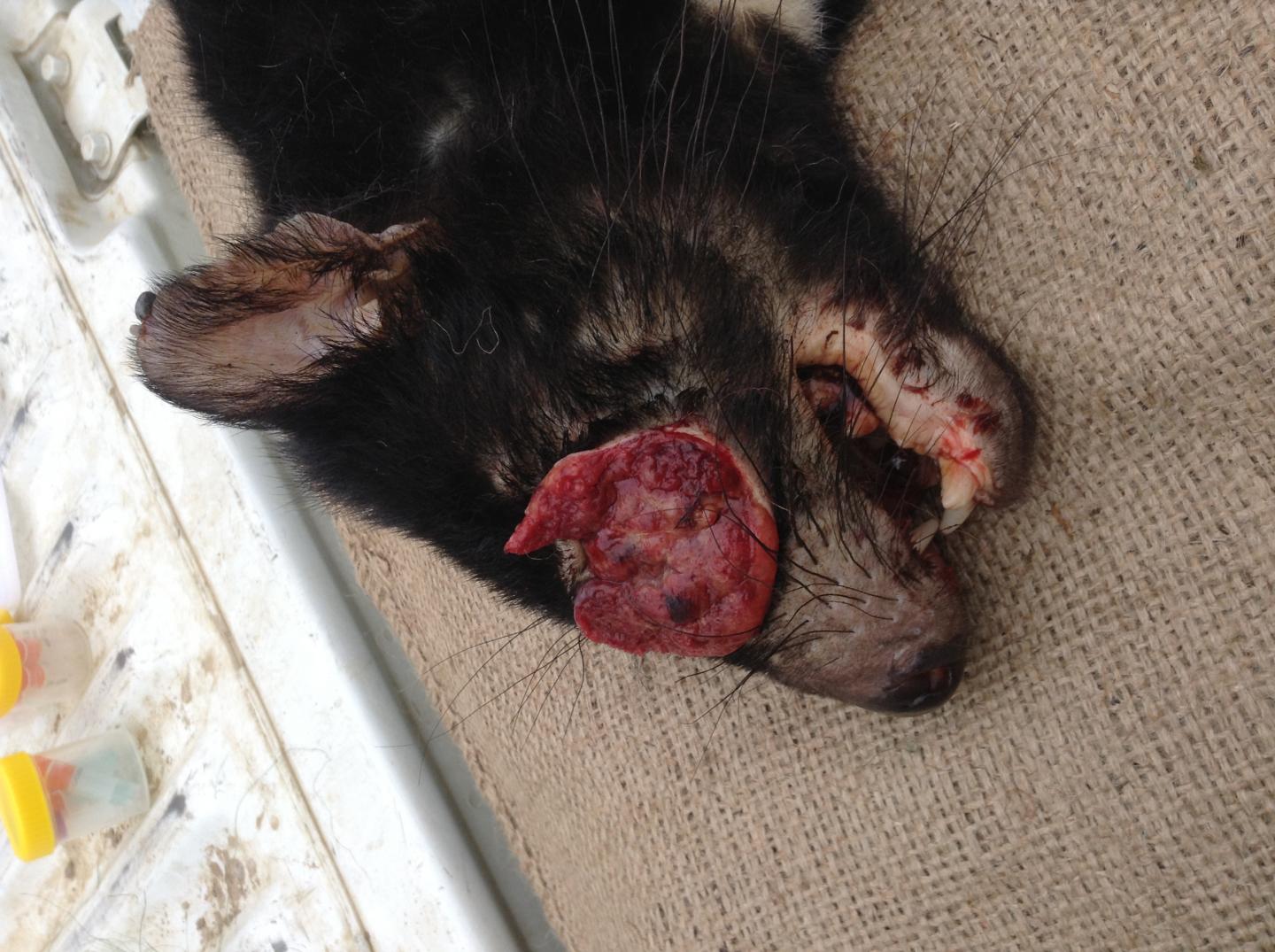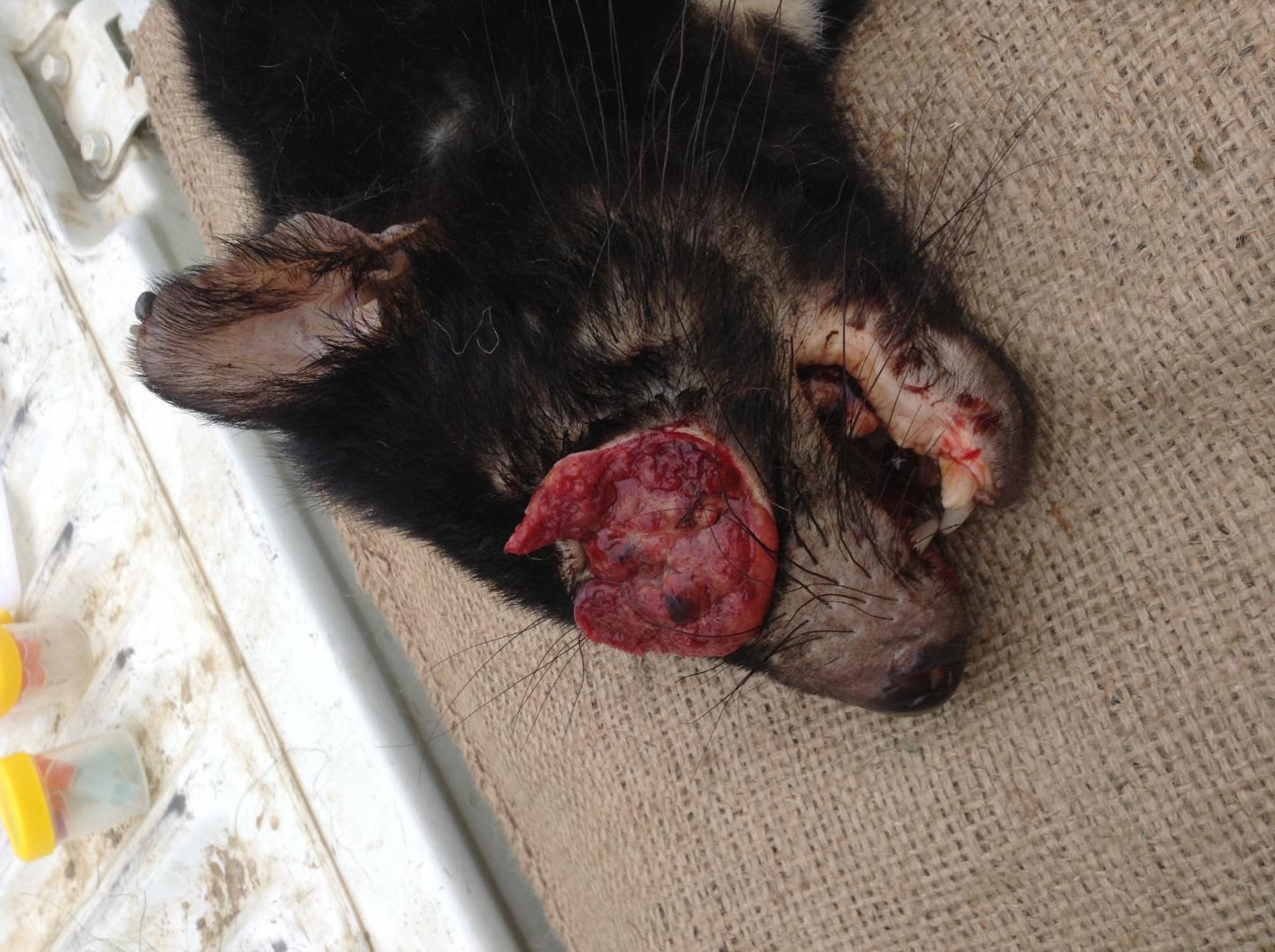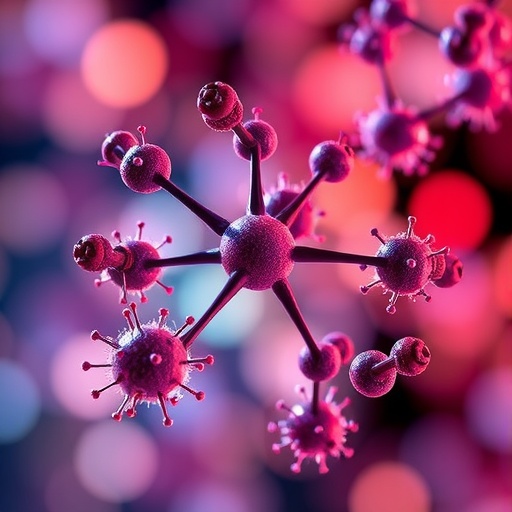
IMAGE: This is a photograph of a Tasmanian Devil with facial tumor.
Credit: Gregory Woods, Menzies Institute for Medical Research, University of Tasmania
ATLANTA–The body can control inflammatory response triggered by invasions of microbial pathogens, such as bacteria and viruses, a discovery that could lead to the development of new therapeutic agents for uncontrolled inflammation, according to researchers at Georgia State University.
The findings, published in the Proceedings of the National Academy of Sciences, describe how myeloid differentiation factor (MyD88), a protein that plays a major role in mediating host defense response against invading pathogens, is tightly regulated to prevent uncontrolled inflammation. MyD88 interacts with receptors known as Toll-like receptors that detect invading pathogens, but until now it has remained unknown how MYD88-mediated signaling was controlled.
"Here we found for the first time that a protein called CYLD plays a critical role in controlling the pathogen-induced inflammatory response by targeting MyD88," said Dr. Jian-Dong Li, director of the Institute for Biomedical Sciences at Georgia State and a Georgia Research Alliance Eminent Scholar in Inflammation and Immunity. "More specifically, we found CYLD inhibits bacteria-induced signaling of MyD88 by deactivating MyD88 at a critical amino acid, lysine 231."
CYLD acts as a "brake pedal" during the body's inflammatory response to pathogens. It turns off host defense response and prevents overactive inflammation, Li said.
While appropriate inflammatory response is critical for combatting microbial pathogens, excessive or uncontrolled inflammatory response leads to detrimental tissue damage and a variety of diseases such as septic shock, asthma, cancer, chronic obstructive pulmonary disease and ear infections. Thus, it is important to closely regulate inflammation.
This study is significant because there is an urgent need to develop novel anti-inflammatory agents to combat inflammation, and these findings could offer an alternative. Steroids have been effective at suppressing inflammation, but if used for long-term treatment they can cause serious side effects, such as increased risk of infections, liver damage, increased blood pressure and slower wound healing.
Scientists have only recently begun to understand the complexities of the body's immune response to microbial pathogens. In 2011, two scientists were awarded the 2011 Nobel Prize in Physiology or Medicine for identifying receptor proteins, named Toll-like receptors, that recognize these microorganisms and activate innate immunity, the body's first line of defense. Soon after this discovery, scientists found MyD88, known as a critical adaptor or bottleneck protein to transduce Toll-like receptor signaling.
In this study, the researchers used nontypeable Haemophilus influenzae (NTHi), a bacterium that is the leading cause of chronic obstructive pulmonary disease (COPD) and ear infections, to induce inflammatory response in mice and human epithelial cells. Their results demonstrate for the first time that NTHi induces lysine 63 (K63)-linked polyubiquitination, a process that is critical for MyD88 to transduce Toll-like receptor signaling, of MyD88 in human epithelial cells and the mice.
The study also found for the first time that CYLD directly interacts with and deubiquitinates or deactivates bacteria-induced K63-linked polyubiquitination of MyD88 at lysine 231 in mice and human epithelial cells. When pathogens invade the body, this triggers the cell signaling pathway, and small proteins called ubiquitin proteins are added to MyD88 to activate it. To deactivate MyD88, ubiquitin proteins need to be removed, an inactivation process called deubiquitination.
"MyD88 has been shown to mediate the host defense response against many microbial pathogens," Li said. "Therefore, understanding how the signaling of this protein is tightly regulated likely could lead to the development of novel therapeutics for many diseases. Because we know this is a key therapeutic target, we can develop therapeutics specifically against this target in the future–for instance, treatments that increase the production of the brake-pedal protein CYLD."
###
Key collaborators on the project include Byung-Cheol Lee and Masanori Miyata of Georgia State and Jae Hyang Lim of Ewha Womans University School of Medicine in Seoul, Korea.
The study was funded by the NIH National Institute of Deafness and Other Communication Disorders and National Institute of General Medical Sciences and the Georgia Research Alliance.





